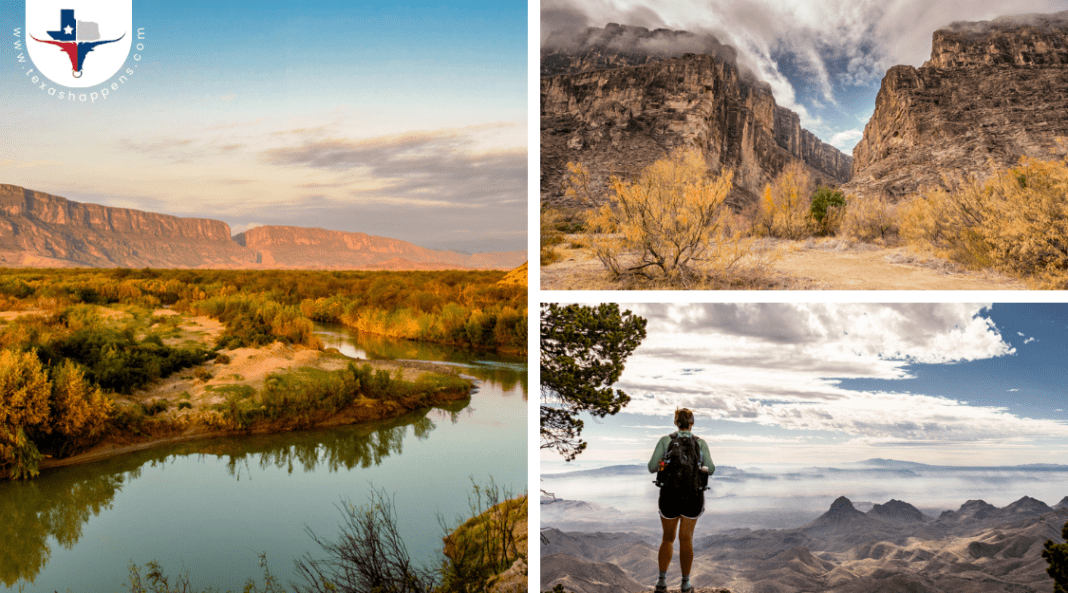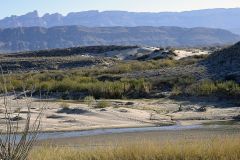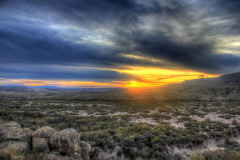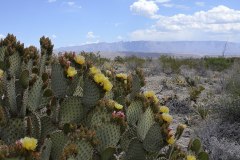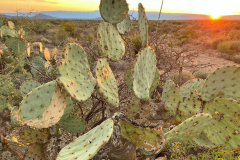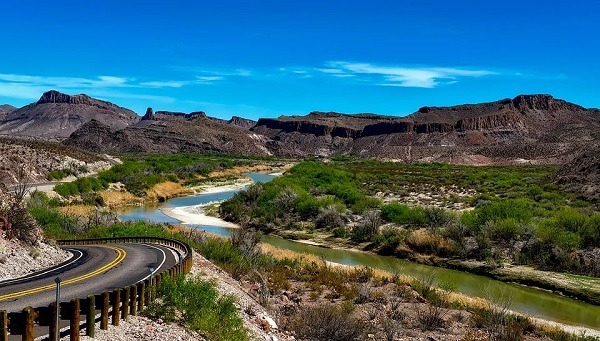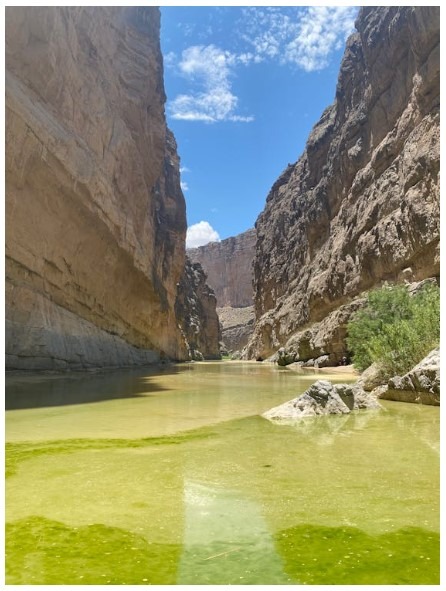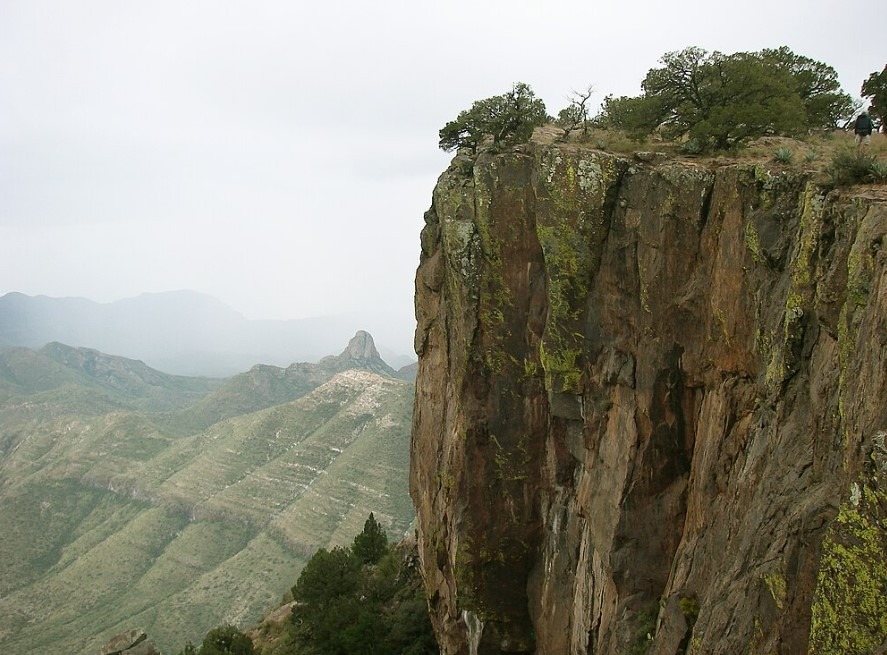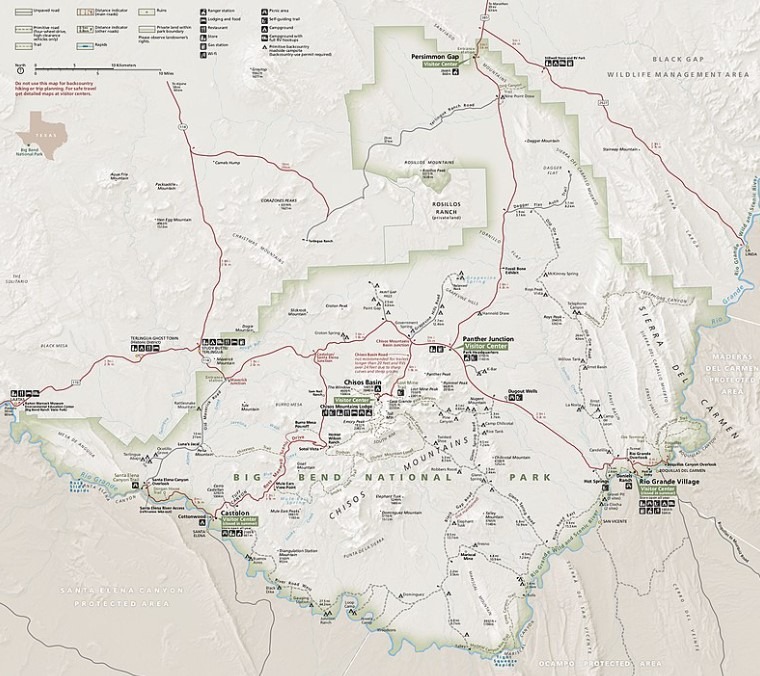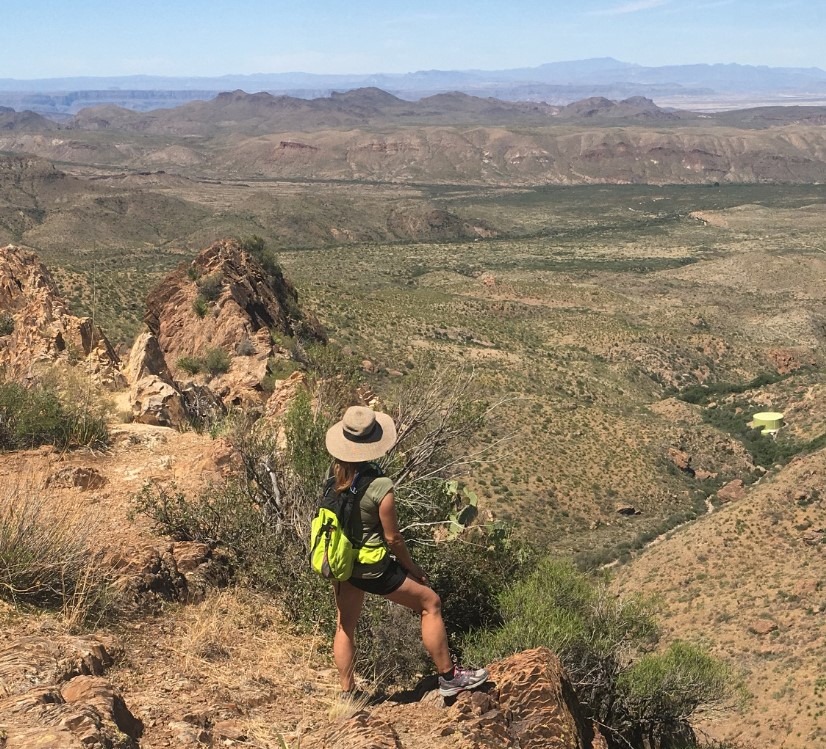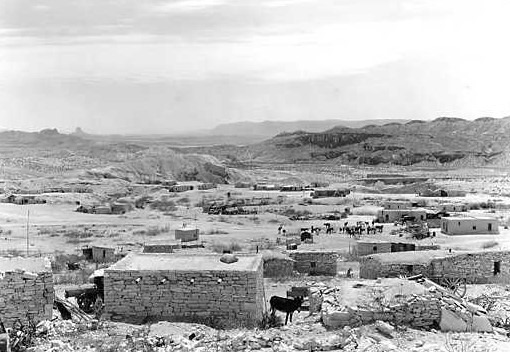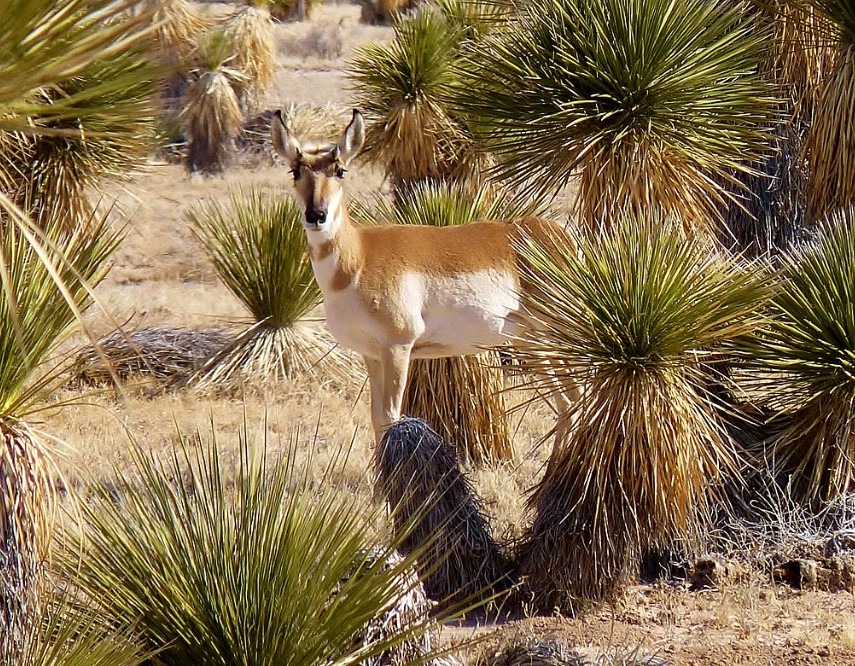The Big Bend National Park has a huge fan base across the world. With several sites to visit along coupled with a wide variety of activities, there is no surprise that this location has amassed thousands of positive reviews over the years. Located on the border of Mexico and Texas with a ghost town by it, this place is literally in the middle of nowhere.
Big Bend National Park offers an expansive wilderness experience in the state of Texas, encompassing a large portion of the Chihuahuan Desert, along with the entire Chisos mountain range. This isolated stretch of rugged terrain is one of the least visited national parks in the United States, but it rewards those who make the journey with dramatic landscapes, diverse ecosystems, and a sense of solitude that’s increasingly rare. For those seeking adventure, Big Bend’s extensive trails and the Rio Grande present opportunities for hiking, rafting, and exploring the backcountry.
Proper planning is essential when visiting Big Bend due to its remote location and the sheer size of the park. Travelers should prepare to navigate the area’s vast distances, be self-sufficient, and respect the delicate desert environment. The park incorporates a variety of accommodations and camping options, catering to different levels of comfort and immersion in nature. It’s not just the geographic features that attract visitors; the park is also imbued with rich cultural and historical sites offering a glimpse into the lives of the people who have inhabited this area over the centuries.
Key Takeaways
- Big Bend National Park is a remote desert landscape with diverse features and activities.
- Visitors must plan ahead for travel and accommodations due to the park’s vastness.
- The park blends natural wonders with cultural and historical significance.
Planning Your Visit
Visitors to Big Bend National Park should carefully consider the ideal time for their trip, how to get there, and the available visitor centers to make the most of their experience. This section provides essential information to help travelers prepare for their journey to one of Texas’s natural treasures.
Best Times to Visit
Big Bend National Park experiences diverse weather conditions throughout the year, making spring (March to April) and fall (October to November) the best times to visit, due to the mild temperatures and low chance of rain. Summer can be extremely hot, whereas winter months offer cooler climates but can be unpredictable. Visitors are also abundant during Spring Break, and so planning ahead is advisable to avoid crowds.
Getting to Big Bend
The park is remote, and travelers should be prepared for a significant drive from major Texan cities such as San Antonio, Austin, Dallas, and Houston. The closest airports are in Midland and El Paso, with Midland being a 3 to 4-hour drive and El Paso around a 4 to 6-hour drive to the park. The gateway towns of Terlingua, Marathon, and Fort Stockton offer lodging and supplies for visitors entering the park.
Visitor Centers
Before venturing into the park, visitors should stop by one of the visitor centers such as the Panther Junction Visitor Center, which is open year-round, or the Chisos Basin Visitor Center that offers stunning views and information on hiking trails. Here, travelers can get current park information, maps, permits, and gain insight into Big Bend’s history and geography.
Guided Tours and Outfitters
For those looking to deepen their exploration of Big Bend, local outfitters provide a variety of guided trips. Visitors can choose from half-day tours to more extended excursions that span several days. These guided experiences often cover hiking, bird-watching, river rafting, and stargazing activities, tailored to suit different interests and fitness levels.
- Guided Hiking Trips: Discover Big Bend’s trails with experienced guides.
- River Tours: Experience the Rio Grande with rafting, canoeing, and kayaking trips.
- Stargazing Tours: Enjoy the dark skies with astronomy experts.
These services not only offer convenience but also a wealth of knowledge shared by guides that can enhance the overall park visit.
Amenities and Facilities
Within the park, the Panther Junction Visitor Center is the hub for amenities and facilities. Here, visitors can gather information about the park, check out exhibits to learn more about the area’s natural and cultural history, and find out about current park conditions. The visitor center includes:
- Information Desk: For park maps, guides, and responsiveness to visitor inquiries.
- Educational Exhibits: Providing insights into the park’s ecosystem and heritage.
Top Big Bend National Park Attractions
There are some areas in Big Bend National Park that you just cannot ignore. While you are there, you need to give the following attractions a visit.
Santa Elena Canyon
The Santa Elena Canyon can be best seen from either a raft or a kayak. You will witness vertical cliffs of 1,500 feet rising from this Canyon. Furthermore, the riparian and the desert areas could be seen from the Lajitas, which happens to be a village located just as you exit the park or enter it. If you want to take a trip of the Canyon, you can start from the trailhead of the Satna Elena Canyon and continue paddling upstream until you float downwards, back from where you started. The trailhead offers you to hike the Canyon’s mouth or take a breather by laying down around the beach after the water level has gone down.
Bosquillas del Carmen, Mexico
Bosquillas del Carmen (or just Bosquillas), Mexico is a town of 300 people, located just across Mexico’s border. You will need your U.S passport to pass the National Park’s Bosquillas Port of Entry. Then, you will be driven in a boat by the locals for around $5, or if you are up for it, you can choose to walk and after the water level has reduced. Now, you will need to hire a burro or walk on your own for half a mile to reach the town. Once you have reached the town, inform the Mexican authorities and visit the restaurants, two in total, to munch on fresh tacos and enjoy cervezas.
This unique opportunity offers visitors the option to cross the national border into Mexico through the Boquillas Crossing. This crossing connects the park with the small Mexican village of Boquillas del Carmen and provides an experience infused with cultural exchange and the stunning geography of Boquillas Canyon.
Boquillas Crossing Information
Big Bend National Park contains a port of entry known as the Boquillas Crossing. This point of access allows park visitors to journey into Mexico to visit the community of Boquillas del Carmen. It is crucial to note that crossing the border does require proper documentation, such as a passport, and compliance with both U.S. and Mexican immigration laws.
- Operating Hours: The Boquillas Crossing is subject to specific operating hours and may have seasonal variations. Visitors should verify the exact hours prior to their visit to ensure a smooth border crossing experience.
- Transportation: Once across the Rio Grande, visitors can choose between a rowboat, horse, or a burro ride, or they can opt to walk to reach Boquillas del Carmen. This journey presents breathtaking views of the landscape, especially the impressive Boquillas Canyon.
- Customs Regulations: Travelers should be aware of the customs regulations when crossing back into the United States. Items purchased in Boquillas del Carmen, such as local crafts or food, must comply with U.S. customs regulations.
The cross-border experience between Big Bend National Park and Boquillas del Carmen offers visitors a chance to observe the natural beauty of Boquillas Canyon and partake in cultural exchange with the residents of the Mexican village.
Langford Hot Springs
The Hot Springs Historic District has a soothing bath for you are known as the Langford Hot Springs, which could be reached by driving on a gravel road for two miles. Back in the 1990s, it was said that the water here could reach a temperature of 105-degrees, which provoked J.O. Langford to settle an area here. Furthermore, it was also said that the water could cure problems related to stomach, skin, and rheumatism as well. Langford had opened a post office and a resort, the remains of which only stand today, reminding that it was a place where human traffic did exist in the early days.
Chisos Mountains
As interesting as it sounds, this chain of mountains could be seen from several points within the park, spread over an area of about 40 square miles. The Emory Peak, which is the highest point of this mountain system, is accessed via the Emory Peak Trail. It needs to be mentioned that the Chisos Mountains are best explored on foot. Therefore, if you are up for a lifetime experience, you need to pack up on some strength and stamina.
Campsites
The Big Bend National Park is not only a place for sites but offers campsites as well. These sites will guarantee solitude like nowhere else. However, you will be accompanied by critters and javelinas as well. Furthermore, you will have no amenities such as running water and shade, etc. so you will need to pack on almost every necessity if you intend to camp. Lastly, some areas require four-wheel-drive vehicles for accessibility since the path is such, which otherwise may not be possible with regular vehicles.
Navigating the Park
Big Bend National Park offers a diverse and expansive landscape that can be navigated by various means. A reliable park map is essential for wayfinding, and visitors can choose between driving on paved highways or tackling improved dirt roads to explore the park’s remote areas.
Park Map and Navigation
Upon arriving at Big Bend National Park, visitors should obtain a park map, which is vital for effectively navigating the park’s expansive terrain. This map is available at all visitor centers and outlines both the main attractions and the network of roads within the park. It includes highways such as Highway 118, which serves as a primary route for accessing different regions of the park. For more adventurous routes, a host of improved dirt roads are mapped out and offer a chance to explore the park’s more remote sections. Always verify road conditions and closures with the park information before setting out.
Transportation Options
Visitors have several transportation options for exploring Big Bend National Park:
- Personal Vehicles: The most common method is by personal vehicle. It is important to note that while main roads are well-maintained, some of the dirt roads require high-clearance and sometimes four-wheel drive.
- Bicycles: For the avid cyclist, bicycles are permitted on all paved and unpaved roads; however, they are not allowed on trails.
- On Foot: Many choose to discover Big Bend on foot, taking advantage of the numerous hiking trails that range from easy to strenuous.
- Guided Tours: For those interested in learning more about the park’s natural and cultural history, guided tours can be an informative option.
Ensure that vehicles are stocked with plenty of water, fuel, and supplies as services are limited within the park boundaries.
Trails and Hiking
Big Bend National Park offers a diverse range of hiking adventures, from the challenging ascents of the Chisos Mountains to serene walks along the Rio Grande. Each trail allows hikers to experience the unique landscapes and ecosystems within the park.
Mountain Hikes
The Chisos Mountains provide a rugged alpine environment, perfect for those seeking a mountain adventure. The South Rim Trail is renowned for its breathtaking views, covering a total distance of over 12 miles with a significant elevation gain. For a challenging day hike, enthusiasts often set sights on reaching Emory Peak, the highest point in the park. At the summit, hikers are rewarded with panoramic views of the entire Big Bend area.
Desert Treks
Away from the cooling heights of the mountains, the desert offers its own stark beauty. The Grapevine Hills Trail guides hikers to fascinating balanced rock formations, with a moderate 2.2-mile round trip. The Boquillas Canyon Trail, on the other hand, leads travelers into the striking canyons carved by the Rio Grande, offering a gentle 1.4-mile journey suited for all skill levels.
River Trails
The Rio Grande acts as a lifeblood to the park, and river trails offer a unique perspective of Big Bend’s ecosystem. The Santa Elena Canyon Trail is a moderate 1.7-mile round trip that takes hikers into one of the most dramatic canyons in the park, Santa Elena. Starting near the Rio Grande Village, this trail gives visitors a chance to witness the stunning contrast between the desert and the river oasis.
Each trail within Big Bend offers a different experience, whether you’re seeking an elevated trek, a desert adventure, or the cool respite of a river walk. They cater to all levels of hiking ability and promise plenty of outdoor adventure.
Big Bend National Park Activities
Now comes the fun part, the Big Bend National Park is home to a variety of outdoor activities that surely need to be tried out.
Hiking
Start from the elevations that are the lowest. Make your way along the Canyon Trail of Boquillas, which is a 1.6-mile round-trip. Not only is this path easy, but it offers river views that are nothing but amazing before it joins the edge of the water close to the steep-slope Canyon’s opening. Be sure to check out the Sam Nail Ranch, which is a round-trip of 0.3 miles. The Chimneys Trail at 4.8 miles offers Native American Art for the art lovers. Now, move towards the Emory Peak that is situated at the height of 7,000 feet in addition to a 5.23-mile hike.
Rafting
Rafting or Kayaking at the Rio Grande is probably the best the park could offer. You could hire half a day adventures or multi-day adventures as well. Floating through the Mariscal, Santa Elena and Boquillas provides splendid views of the canyons. Not only that, but you will also come across wildlife as well, such as beavers and great blue herons that are resting along the banks. If you thought that was enough, wait till you find yourself navigating through whitewater that is a sight to sore eyes.
Stargazing
As beautiful and splendid the park is during the daytime, it is even more stunning at night. Once the sun gradually sets and the sky is overtaken by moon and stars, you will not be able to contain the photographer inside you. If you are lucky, you might have a nice warm breeze slowly hitting you from every angle while you gaze at the stars and try to snap a perfect photo. As already mentioned, you can find sufficient solitude in certain areas at Big Bend National Park, but this is going to be something even more peaceful and relaxing.
Biking
Another great way to enjoy the fantastic views and explore the park. Hop on a bike and paddle across a total of 260 miles of both paved and unpaved roads to experience some of the most scenic views. However, things will become a bit complicated as you reach the steep hills. Get yourself a mountain bike and trail as much as you can to make the most out of the adventure.
Exploring the Natural Features
Big Bend National Park offers visitors an impressive array of natural features that reflect both the park’s geological history and its rich biodiversity. From the ancient limestone that forms dramatic canyons to the diverse habitats supporting myriad plant and animal species, each feature invites exploration and appreciation.
Regional Geology
The geology of Big Bend is a tale of change and complexity. Central to this story are the Chisos Mountains, a range of volcanic origin that rises dramatically from the surrounding landscape. Here, Emory Peak, the park’s highest point, provides a view into the geological past with its exposed layers. The park is also home to fascinating formations like the Grapevine Hills, which showcase giant boulders balancing atop one another, a result of volcanic activity and erosion.
Unique Ecosystems
Occupying a transition zone between the temperate and subtropical realms, Big Bend boasts one of the most diverse ecosystems in North America. It encompasses the Chihuahuan Desert, an environment teeming with life, adapted to its harsh conditions. Over 1,200 plant species, including various cacti, and animals such as black bears and mountain lions find refuge here. Along the winding Rio Grande, riparian environments support verdant plant life and a corridor for migratory birds.
Scenic Overlooks
For those seeking breathtaking vistas, Big Bend offers numerous scenic overlooks. The imposing Santa Elena Canyon, with walls reaching 1,500 feet, is carved by the Rio Grande. Visitors may also venture to the South Rim for panoramic views of the desert below. Limestone cliffs provide a striking backdrop against the vast Texas sky, making these overlooks a photographer’s and nature lover’s paradise.
Activities in Big Bend
Big Bend National Park offers a multitude of activities for adventure seekers and families alike, from horseback riding on rugged trails to serene stargazing under dark skies. Visitors can expect to encounter diverse wildlife and scenic drives that showcase the park’s unique landscape.
Outdoor Adventures
- Horseback Riding: Journey through Big Bend’s trails on horseback for a unique perspective of the park. There are guided tours available, providing an opportunity for visitors to explore the area with the expertise of a local guide.
- Rafting: The Rio Grande River provides thrilling rafting experiences for all skill levels. Whitewater and calm water trips offer visitors a chance to see the park from a different vantage point.
- Bird Watching: Big Bend is a premier destination for bird watchers, with over 450 species recorded. The park’s diverse habitats make it an ideal spot for year-round bird watching.
- Stargazing: Known for its dark skies, the park offers exceptional stargazing opportunities. Big Bend has minimal light pollution, making it perfect for viewing the Milky Way and other celestial bodies.
Family-Friendly Activities
- Scenic Drive: Families can enjoy a leisurely drive through the park’s scenic routes. The Ross Maxwell Scenic Drive is particularly noted for its stunning vistas and access to key features of the park.
- Wildlife Viewing: With its diverse wildlife, families have the chance to spot everything from roadrunners to black bears. Always be sure to observe animals from a safe distance.
Visitors are encouraged to check current conditions and any potential activity restrictions before planning their adventure in Big Bend National Park.
Cultural and Historical Sites
Big Bend National Park is not only a place of natural wonder but also a mosaic of cultural and historical significance. It boasts a variety of archeological treasures and historical landmarks that tell the story of the area’s past inhabitants and events.
Archeological Treasures
Big Bend’s rich tapestry of history is evident in its archeological sites, revealing human activity that dates back thousands of years. One notable site is at Persimmon Gap, where visitors can observe signs of early hunter-gatherers. Another significant location is Boquillas del Carmen, an old village reflecting a cross-cultural blend along the Rio Grande. Those interested in the natural history will find the Fossil Discovery Exhibit engaging as it showcases the park’s ancient biological past.
Historical Landmarks
Terlingua, once a thriving mining community, now serves as a ghost town allowing visitors to ponder on its once bustling past. Close by, Study Butte offers insights into the mining era through its historic buildings and remnants. Another historical jewel is Big Bend Ranch State Park, where visitors can immerse themselves in Texas’s ranching legacy. Historical structures and sites here hint at the challenging life of early settlers and the evolving story of this rugged terrain.
Wildlife and Vegetation
Big Bend National Park is a biodiversity hotspot where the abundant wildlife and diverse vegetation are among the park’s most remarkable features.
Animals of Big Bend
The park’s terrain provides refuge to a wide range of animals, including several large mammals and an impressive variety of avian species. The elusive mountain lions roam the more remote and rocky regions, while black bears are sometimes spotted in the wooded areas. Javelinas, the park’s collared peccaries, are more commonly seen throughout the Chihuahuan Desert landscape. Birdwatchers are drawn to the park as it houses over 450 bird species, making it a premier birding destination.
Plant Life
Vegetation in Big Bend ranges from desert succulents to hardy high-mountain trees. One finds the Chihuahuan Desert dotted with typical desert flora, including species such as lechuguilla and various cacti. In higher elevations, one can discover woodlands characterized by Texas madrones and ash trees. The park’s plant diversity is a testament to its ecological complexity, with over 1,200 plant species documented within its boundaries.
Lodging, RVs and Camping
Big Bend National Park offers a range of accommodations to satisfy visitors’ preferences, from the comfort of a lodge to the adventure of camping beneath the stars. Visitors can choose from lodge accommodations at the Chisos Mountains, or select from various campgrounds that provide different levels of amenities.
Campgrounds
The park offers three NPS-operated campgrounds with basic amenities like drinking water and restroom facilities.
The first one being, the Chisos Basin Campground accommodates around 60 campers and tents. However, RVs within the 24 feet limit and trailers within 20 feet limit are only allowed.
The Cottonwood Campground is another campsite which, as compared to the Chisos Basim Campground, is smaller, featuring 24 sites with picnic tables. This campsite includes places where you could refill water as well.
Lastly, the Campground of Rio Grande Village is the biggest that offers 100 sites along with a store and showers at a walking distance. It needs to be mentioned that none of these sites offer camping services, but a 25-site RV operated concession park does.
Advanced reservations are highly recommended and can be booked up to six months in advance. Visitors seeking a more secluded experience can inquire about backcountry permits at the Panther Junction Visitor Center, which allow for camping in more remote areas of Big Bend.
Chisos Mountain Lounge
Situated at the height of around 5,400 feet at the Chisos Mountain’s base is the Chisos Mountains Lounge. During the summer, you will get to enjoy cooler temperatures along with 72 rooms for different housing needs. Rooms of The Rio Grande Motel and The Casa Grande have basic amenities to offer while the Emory Peak Lodge consists of eight rooms, and the Roosevelt Stone Cottages offers five cottages that are similar to the comfort found in your home. Moreover, there is a general store as well, which opens early in the morning to restock on your snacks and other essential items before you begin with another day of an exciting adventure.
Food and Dining
The Big Bend National Park doesn’t offers much in terms of food and dining. The Chasis Mountain Lounge has a dining spot, but the menu is limited. You can visit Emery Peak’s lounge, which offers a little more variety in food. If you want to get your hands-on groceries, you can give the Study Butte grocery store a visit.
Additionally, there are convenience stores and dining options in surrounding communities for guests’ convenience. It’s important for visitors to check the availability of these services ahead of their visit, as operating hours can change seasonally.
Safety and Regulations
Safety is the top priority at Big Bend National Park, and visitors should familiarize themselves with the specific guidelines and regulations to ensure a secure and enjoyable visit. This section covers crucial safety concerns relating to wildlife and establishes the park rules to follow.
Wildlife Safety
In Big Bend National Park, encounters with various wildlife species, such as mountain lions, can pose danger if not managed properly. Texas is home to these majestic creatures, and while sightings are rare, visitors should maintain a safe distance at all times. For protection against venomous snakes, scorpions, and other desert critters, it is advised to:
- Inspect shoes, sleeping bags, and bedding before use.
- Carry a flashlight at night to avoid startling any nocturnal animals.
- Wear high boots or protective leggings when hiking to prevent bites.
Additionally, one should never feed or approach the wildlife to prevent accidental injury and to keep the animals wild.
Park Rules
Adhering to the park’s rules is essential for both the safety of visitors and the protection of the park’s delicate desert ecosystem. The following are key regulations to heed:
- Campsite Limit: Each campsite accommodates up to eight people. If your group exceeds this number, additional campsites must be occupied and paid for.
- Water Conservation: Visitors must practice water conservation due to the desert environment’s limited water resources. Carry ample water and use it judiciously.
For a detailed account of all safety measures and park rules, consult the Backcountry Preparation and Safety guide and be sure to follow campground guidelines as per the Campground Regulations. Following these precautions ensures a safer park experience for everyone.
Frequently Asked Questions
Visitors planning a trip to Big Bend National Park often have questions regarding attractions, accommodations, trip duration, travel considerations, visiting seasons, and safety measures.
What are the top attractions to visit in Big Bend National Park?
Big Bend National Park offers a range of attractions such as the scenic Chisos Mountains and the Santa Elena Canyon. River trips along the Rio Grande are also a popular activity.
What are the best camping options available in Big Bend National Park?
There are several camping options within Big Bend National Park, including developed campgrounds like Chisos Basin and Rio Grande Village, as well as backcountry sites for a more solitary experience.
What is the ideal duration for a trip to Big Bend National Park?
A trip to Big Bend National Park ideally lasts at least three to four days to allow sufficient time to explore the main attractions, enjoy some hiking trails, and experience the park’s diverse environments.
What should visitors be aware of before traveling to Big Bend National Park?
Before traveling, visitors should check for current park conditions and availability of services. They should also be aware that they can legally cross into Mexico through the Boquillas Crossing Port of Entry with a valid passport.
What time of year is recommended for visiting Big Bend National Park?
The best time to visit Big Bend National Park is during the fall and spring months when temperatures are milder. Summer can be extremely hot, and some facilities may operate on a limited schedule.
What safety considerations should be taken into account when visiting Big Bend National Park?
Safety considerations include staying hydrated, being aware of wildlife, and understanding the risks of remote hiking. Visitors should also know park regulations regarding pets and the requirement to leave no trace to preserve the park’s natural beauty.
What are the benefits of a Jr. Ranger Badge?
Things become even more exciting as you work your way towards earning a Jr. Ranger Badge. Earning a badge unlocks some park features that are not accessible otherwise, such as the centennial hiking patches. And since you will not be visiting this place each year, it would be best to try and visit everything.
Final Word
Even after you have visited and experienced pretty much everything the park has to offer, it will still feel like you have just grazed the surface. The Big Bend National Park is a perfect place for hiking and camping. Lastly, the canyons and the amazing views of the river makes this place perfect for adventure buffs.

